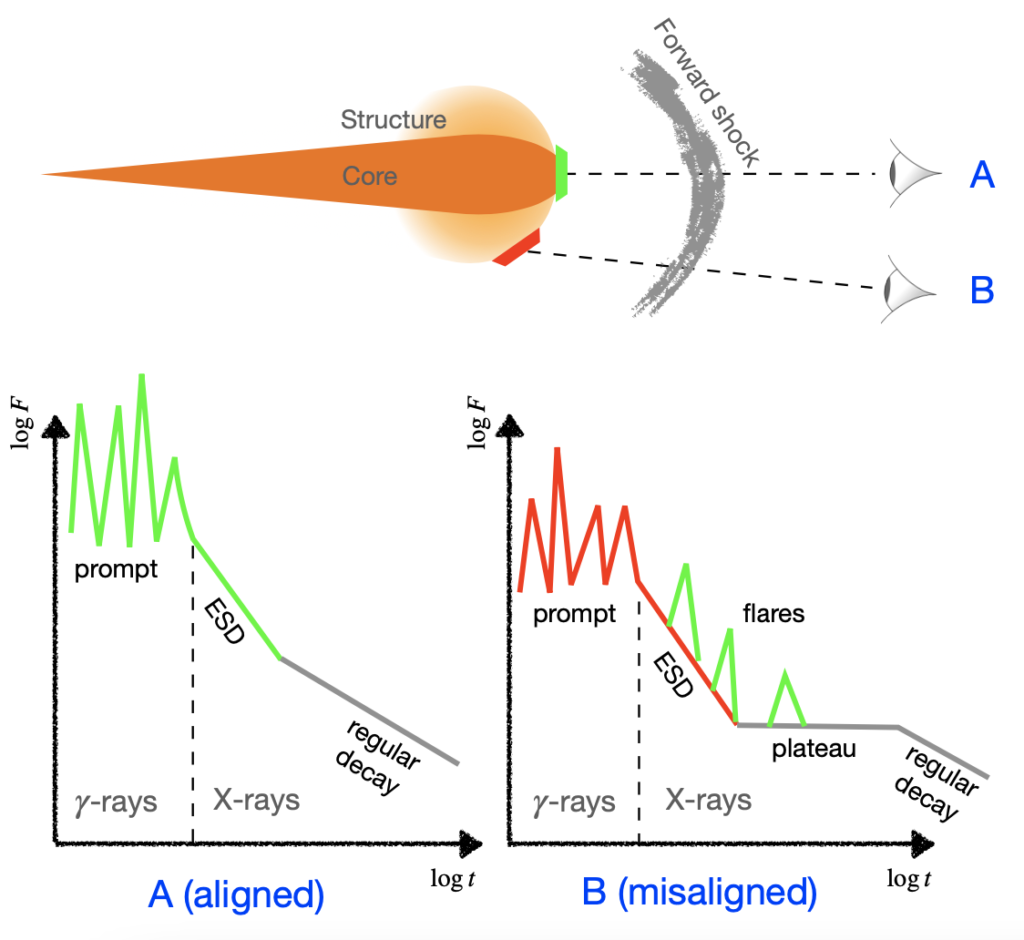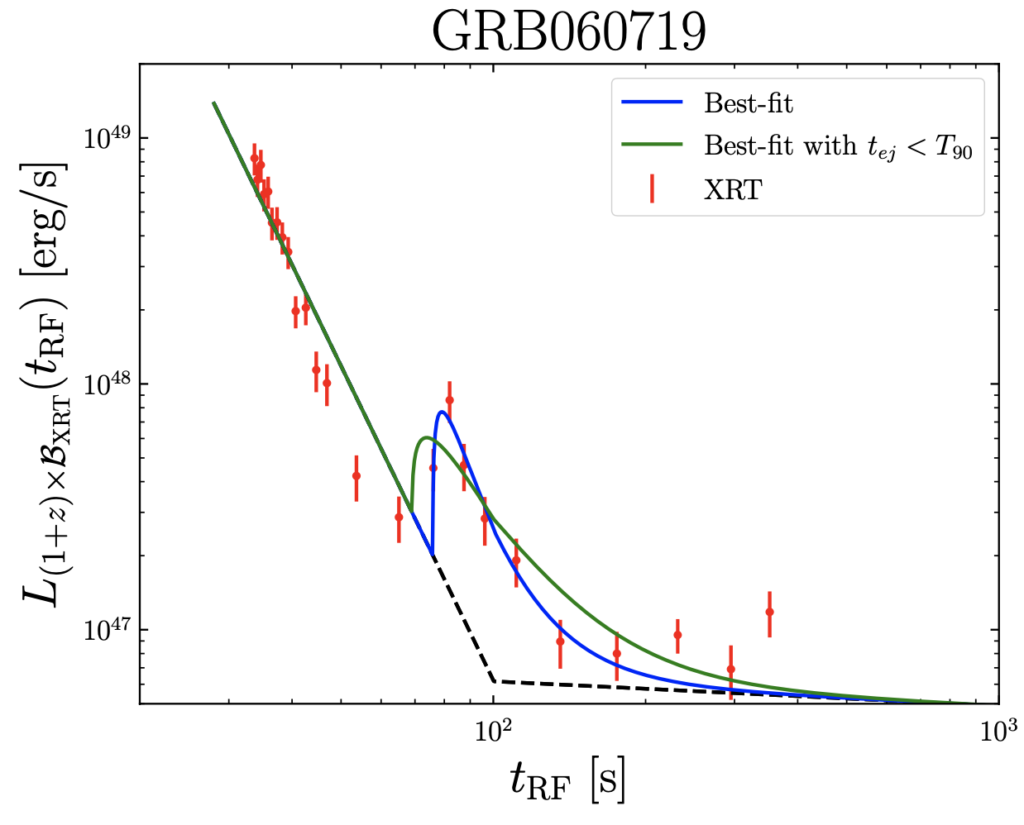In this paper, we develop a model to explain the flaring activity in the X-ray afterglows of gamma-ray bursts (GRBs) within the framework of slightly misaligned observers to structured jets. We suggest that flares could be the manifestation of prompt dissipation within the core of the jet, appearing to a misaligned observer in the X-ray band because of less favorable Doppler boosting. These flares appear during the afterglow phase because of core–observer light travel delays. In this picture, the prompt emission recorded by this observer comes from material along their line of sight, in the lateral structure of the jet, outside the jet’s core. First, we lay down the basic analytical framework to determine the flares characteristics as a function of those of the gamma-ray pulse an aligned observer would have seen. We show that, for typical flare observing times and luminosities, there is indeed viable parameter space to explain flares in this way. Then, we analytically explore this model and show that it naturally produces flares with small width, a salient property of flares. Finally, we perform fits of our model to two Swift/XRT flares representing two different types of morphology, to show that our model can capture both. The ejection time of the core jet material responsible of the flare is a critical parameter. While it always remains small compared to the observed time of the flare, confirming that our model does not require very late central engine activity, late ejection times are strongly favored, sometimes larger than the observed duration of the parent gamma-ray burst’s prompt emission as measured by its T-90 value.
In the figure to the right, we schematically describe our overall picture for GRB flares. For an aligned viewer (A), the GRB prompt emission comes from the core jet shining in gamma-rays (green), and the afterglow phase contains the early steep decay and radiation from the decelerating forward shock (grey); all other jet regions are too weak and not boosted enough to contribute to the aligned observer’s signal. For a misaligned observer (B), the prompt emission and early steep decay come from the material down their line of sight (red). Progressively, the structured jet decelerates, giving rise to the plateau phase (grey). In the mean time, prompt photons from the core (green) travel to the observer, and reach them as X-ray flares, i.e., deboosted and dimmer than photons that would have reached the aligned observer.


In the plot to the left, we present the parameter space for our flare model. As described previously, our study suggests that flares in gamma-ray bursts are due to energy dissipation in relativistic shells in the core of the jet. However, these shells cannot assume any values for their characteristics such as energy or Lorentz factor. Indeed, they have to be consistent with the constraints on the jet we know from prior GRB studies. In this plot, we study these constraints in the plane of shell energy (y-axis) versus shell angular timescale (x-axis). Here is the list of such constraints: (i) shell energy cannot exceed 3.10^53 erg, (ii) shell ejection must occur within ~80 seconds after the jet launching, (iii) in our model, the observer is slightly off-axis. Combined, these constraints force the model parameters to lie within the purple region of the figure, referred to as the available region in model parameter space.
In the figure on the right, we present fits of our model (blue and green curves) to actual data from the X-ray telescope aboard the Swift spacecraft. These show that our model is able to reproduce the data, especially when we relax the hypothesis that the shell launching in the core must precede the observation of the GRB on the misaligned line of sight. Whether shell ejection in the core of relativistic jets precedes the prompt dissipation in lateral regions of the jets is still unclear. Our model provides novel insight into this question and, generally, the question of the structure of GRB jets.

